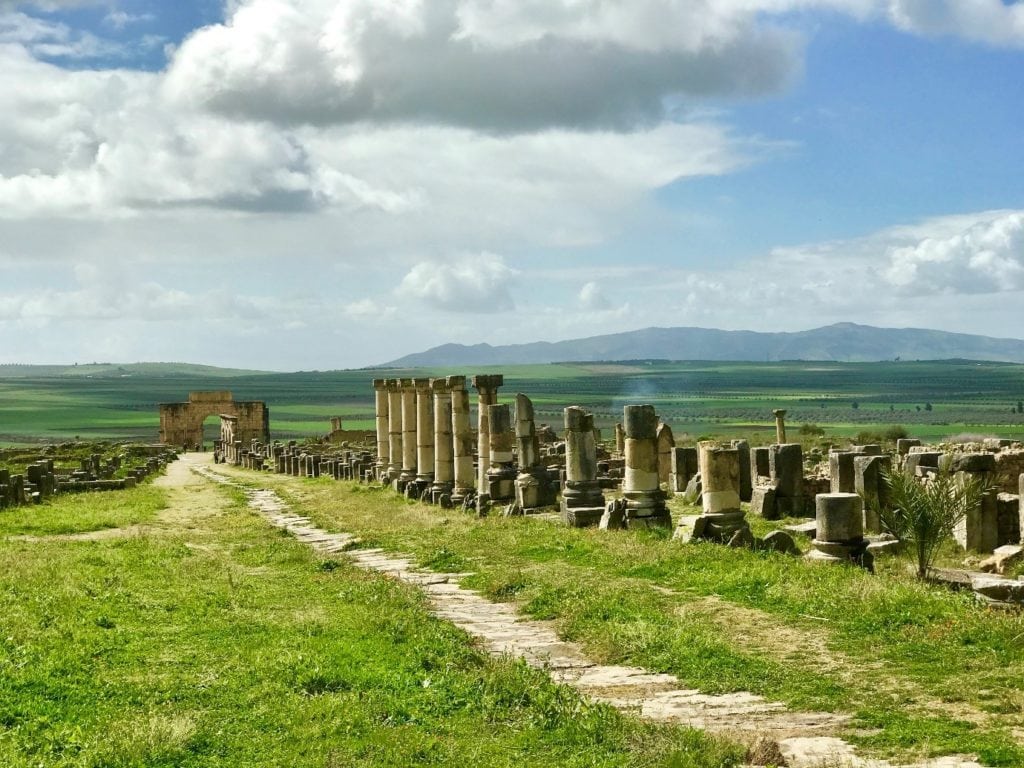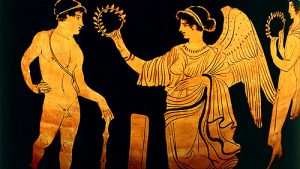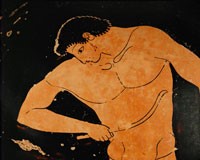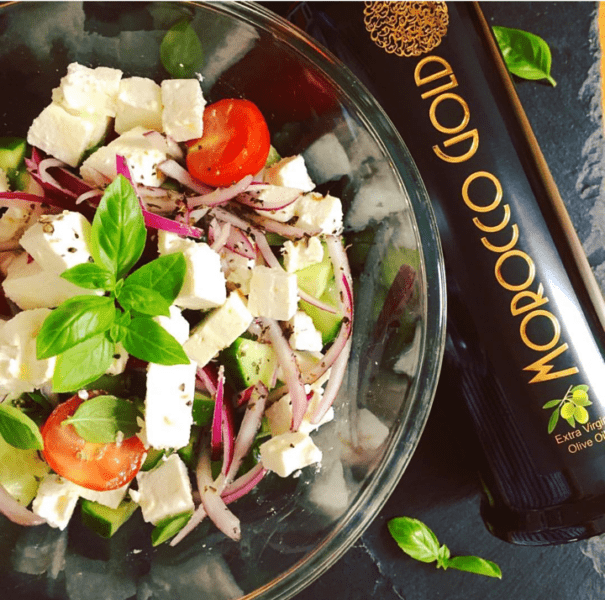We trace the history of extra virgin olive oil and the historic benefits of olive oil from earliest known to today. We also examine what makes for best olive oil and the key role of polyphenols in olive oil benefits.
Updated 31st July 2024

Summary
- Olive oil was used to anoint kings and athletes in ancient Greece.
- Early Middle Eastern civilisations relied on Olive Oil to cure everything.
Contents
- Extra Virgin Olive Oil: Where did it all begin?
- Olive Oil Culture : The Wisdom Of The Ancient World
- Olive Oil In Ancient Greece
- Olive Oil In Ancient Rome
- Olive Oil & Islam
- Is Olive Oil A Food Or A Medicine?
- Olive Oil in Central Europe
- The Olive In California
- Olive Oil For Cooking Through History
- What Makes Extra Virgin Olive Oil So Special?
- What Are Polyphenols?
- Polyphenols In Extra Virgin Olive Oil
- Polyphenols In Morocco Gold Extra Virgin Olive Oil
- Types Of Polyphenols & Benefits Of Olive Oil
- Extra Virgin Olive Oil: Ancient Wisdom That Lives On
Extra Virgin Olive Oil: Where did it all begin?
There can’t be many foods that have endured such world-wide constant popularity as Extra Virgin Olive Oil. Indeed, for many of us, it is hard to imagine a time when a bottle of the best olive oil you can afford was not a permanent feature in our kitchen stores. The oil derived from the humble olive tree has been a vital source of nutrition and flavour in our diets for centuries. Our love affair with extra virgin olive oil and the cultivation of olive trees dates back around 6000 years, with debate still raging whether its origins were in ancient Persia, Mesopotamia, or Egypt. Despite such extensive history, however, the most common use of extra virgin olive oil has not significantly changed since then, with cooking, beauty and health being the most enduring motivators behind our ongoing devotion to ‘liquid gold’.
The olive tree, originally native to Asia Minor, gradually spread from Iran, Syria, and Palestine to the broader Mediterranean basin. By as early as 3,000 BC, olive trees were cultivated on the island of Crete, and their fruits were highly prized, even being discovered in Egyptian tombs dating back to 2,000 BC. The Greek and Roman empires revered olive oil, building strong cultural beliefs around its powers and benefits. This reverence laid the foundation for the widespread and enduring appreciation of olives and extra virgin olive oil.
Today, this rich history has culminated in the global embrace of the Mediterranean diet, renowned for its health benefits and delicious flavors. This diet, which prominently features olives and olive oil, is celebrated worldwide for promoting longevity and well-being, illustrating how ancient traditions continue to influence modern culinary practices and health trends.
Over many thousands of years, man has manipulated the olive tree into the countless varieties that we see and consume today. According to Greek mythology, however, the original olive tree was planted as a gift by Goddess Athena on a rock hill we now know as the Acropolis.
The olive trees on the Mount of Olives in Jerusalem are reported to be over 2,000 years old, standing as living testaments to the rich history and cultural significance of the olive. In ancient times, olive oil was a versatile and valuable commodity, used in a variety of important ways. It was employed in religious rituals, including the anointing of the dead, symbolizing purity and sanctity. Beyond its spiritual uses, olive oil served practical purposes as well; it was a key ingredient in early medicines, known for its healing properties, and it was used in the creation of perfumes, valued for its pleasant scent and preservative qualities. This multifunctional oil was integral to daily life, highlighting its importance in ancient societies.
Hippocrates, often referred to as the “Father of Medicine,” was the first known figure to utilize olive oil-based ointments for treating wounds and traumas. His pioneering use of olive oil in medical treatments set a precedent that would evolve significantly over the centuries. During the Middle Ages, the medicinal applications of olive oil expanded as it became a widely recognized remedy for various ailments. It was commonly used to soothe sore throats, thanks to its anti-inflammatory and soothing properties. Additionally, olive oil was applied to cuts and bruises, capitalizing on its natural ability to promote healing and reduce pain.
As the Greek physician himself so famously said:
Let they food be thy medicine and let they medicine be thy food.
Hipprocates
Olive Oil Culture : The Wisdom Of The Ancient World
Olive oil has long been considered sacred. The olive branch was often a symbol of abundance, glory, and peace. Over the years, the olive has also been used to symbolize wisdom, fertility, power, and purity. Olive oil was believed to bestow strength and youth, not least because of the tree’s longevity and its tremendous resilience. Even through the harshest summers and winters they continue to grow strong and bear fruit
Olive oil was valued not only for food and cooking but also for its versatile applications in various aspects of daily life and rituals. It served as fuel for lamps, was used in sacrificial offerings, and was made into ointments. Additionally, olive oil played a crucial role in ceremonial anointing for priests and royalty. The leafy branches of the olive tree held symbolic significance as well; they were offered ritually to deities and influential figures as symbols of blessing and purification. These branches were also used to crown victors, whether in peaceful competitions or in the aftermath of bloody wars, embodying triumph and honor.
The olive tree is one of the first plants mentioned in the Christian Old Testament, and one of the most significant. An olive branch was brought back to Noah by a dove to demonstrate that the flood was over.
Olive Oil In Ancient Greece
Olive oil was used to anoint kings and athletes in ancient Greece. It was burnt in the sacred lamps of temples and fuelled the “eternal flame” of the original Olympic games. Victors in these games were crowned with its leaves.

In ancient battles, olive branches were used to crown the victors. Greek soldiers are said to have rubbed olive oil into their bodies for grooming and good health as well as using it in their lamps for lighting.
The Spartans buried their dead on a bed of olive twigs to protect their souls. The olive tree was also used to protect the living, with those who attended funerals wearing crowns of olive branches to guard themselves against evil.
Legend has it that Poseidon, the sea god, and Athena, goddess of wisdom, competed to find the gift that would be most valuable to humankind. Poseidon offered the horse and Athena the olive tree. Because of its many uses, the provision of heat, food, medicine and perfume, the olive tree was chosen as the most valuable and in return for Athena’s contribution, the most powerful city in Greece was named Athens in her honour.
In Greece 500 B.C, olive oil’s revered status was further confirmed by an image of the goddess Athena, with her head crowned with olive oil, imprinted onto the Drachma, the Greek coin. At the time, the Drachma was the Mediterranean’s most circulated currency.
Olive Oil In Ancient Rome
According to Pliny the Elder, a vine, a fig tree, and an olive tree grew in the middle of the Roman Forum; the latter was planted to provide shade.

During the Roman Empire, soaps were not yet in use. Instead, Romans employed a unique bathing method where they would rub olive oil all over their bodies. They then used a tool called a strigil to scrape off the oil, effectively removing dirt and grime along with it. This practice not only cleansed the skin but also left it feeling silky and moisturized.
In affluent patrician households, olive oil was often infused with fragrances, leaving a sweet aroma on the skin after use. Just as we do today, they would add olive oil to their private baths, enjoying its skin-softening properties and the relaxing effects of aromatherapy.
During workouts and official competitions, athletes would apply olive oil all over their skin to make it slick and smooth. One could also imagine how pleasing this look was to the crowd’s eye in an age where physical perfection of the body was praised and immortalized in statues.
Olive Oil & Islam
The olive tree and olive oil hold significant mention in the Quran, appearing seven times and being celebrated as precious. In Islamic tradition, the health benefits of olive trees and olive oil are highly regarded, particularly within Prophetic medicine. The Prophet Muhammad is reported to have extolled the virtues of olive oil, saying, “Take olive oil and massage with it – it is a blessed tree.” This endorsement highlights the esteemed status of olives and olive oil in Islamic culture, not only for their nutritional and medicinal properties but also for their spiritual significance. Olive oil is cherished for its ability to promote health and well-being, embodying the concept of barakah, or blessing, in everyday life.
Is Olive Oil A Food Or A Medicine?
In Rome, olive oil was integral to health and well-being. Roman medicine, heavily influenced by Greek doctors, drew extensively from their practices, which shaped European medicine for centuries. Hippocrates, the father of modern medicine, documented over 60 conditions or ailments that could be treated with olive oil. His writings cover a wide range of uses, including treatments for skin problems, burns, wounds, ear infections, gynecological issues, and the healing of surgical scars. Remarkably, many of these applications remain relevant and continue to be used as home remedies today.
The Roman doctor Galen, who was born in Greece, was also credited with the invention of cold cream, using olive oil as his base for in instead of the modern day mineral oil. It has been in used for over a thousand years for soothing skin and relieving sunburns.
Early Middle Eastern civilisations relied on Olive Oil to cure everything. To this day, many in the region drink olive oil daily to keep the body running efficiently. Warm olive oil is commonly used in the west to soothe earache.
Olive Oil in Central Europe
Archaeologists studying early Celtic remains in France have discovered traces of olive oil on pottery fragments dating from around 500 BCE, providing the earliest known evidence of olive oil use in Central Europe.
The discovery was made while examining the remains of 99 ceramic vessels from the hill fortress of Mont Lassois in Burgundy, east-central France. Traces of organic substances were found on the vessels, including beeswax, beer, wine, millet, milk and olive oil.
The study was conducted by an international team of researchers, led by archaeologist Philipp Stockhammer from the Ludwig-Maximilians-Universität München.
The early Celts inhabited southern Germany, northern Switzerland and part of eastern France during the Early Iron Age. It has long been known that they traded with Mediterranean communities, adopting not only their goods but also some of their traditions, such as wine-feasting. What was not known was that olive oil was among the foreign imports.
While the researchers are confident that the oil was imported from the Mediterranean coast of France, they still do not know where it was produced.
According to the study, which was published in the scientific journal Plos One in June 2020, the Celts travelled south along the Rhone River to trade with Greek colonies on the French coast, particularly Marseille, bringing back a range of Mediterranean goods. These imports included Greek and Italian pottery, as well as grape wine and olive oil.
The Olive In California
As the Franciscans marched north, establishing missions in California, they also planted olive groves. Southern California saw the first olive trees.
According to an account in Judith Taylor’s book, The Olive in California, a visitor to Mission San Fernando in 1842 saw the mission buildings in ruins but the orchard with a good crop of olives. The visitor remarked that the mission probably had the biggest olive trees in the state. Subsequently in the past 150 years, trees have been planted in several waves along with interest in olives and olive oil. Many of these older groves (80-150 years old) still exist in California. Most are in Northern California. In Southern California population and housing pressure have put the farmers out of business. There are many isolated trees or fragments of old groves, but the land is too expensive for olive growing. Income per acre is 10 times lower than other crops like wine grapes and even those can’t compete with development potential. The Mission Olive Preservation, Restoration, and Education Project (MOPREP) aims to preserve the cultural link to the California Mission Olive tree for the purpose of general public education and enjoyment.

Olive Oil For Cooking Through History
There is also a rich and varied history of extra virgin olive oil being used as a staple cooking ingredient in many cultures and periods of history and is one of the earliest oils used in cooking, next to coconut and seasame.. Perhaps the most common of those is the Mediterranean diet, where it continues to be one of the three key plant-based foods within much of their cuisine; the other two being wheat and the grape.
Extra virgin olive oil was used in both cooked and uncooked dishes with a typical meal containing grains or flour mixed or rubbed with olive oil sometimes with added honey. A favourite cake in Roman times was called vatica which contained only flour, salt and extra virgin olive oil. Different meats were always generously oiled before and after cooking. The ancient Greeks invented the salad dressing which was comprised of extra virgin olive oil, vinegar, sea salt and honey.
Olive oil remains a pantry staple to this day as many recipes depend on it, most commonly being used as a dressing in salads. In spite of being a fat, olive oil does not contribute to significant weight gain or obesity, as it has been shown to lower blood sugar levels.
In particular, extra virgin olive oil (or EEVO) has been identified over time as having a superior taste due to being derived by cold mechanical extraction without the use of solvents or refining methods. In more recent history, the olive and its derivative oils have spread to North and South America, Japan, New Zealand and Australia.
What Makes Extra Virgin Olive Oil So Special?
Thanks to the recent spotlight on the Mediterranean Diet, extensive research has been done on the phytonutrient composition of extra virgin olive oil. What has been discovered is an extensive list of phytonutrients; one of the most praised is its polyphenols. The number of polyphenols found in Morocco Gold extra virgin olive oil is truly amazing!
What Are Polyphenols?
Polyphenols are a group of over 500 phytochemicals, which are naturally occurring micronutrients in plants. These compounds give a plant its colour and can help to protect it from various dangers. When you eat plants with polyphenols, you reap the health benefits as well.
Polyphenols In Extra Virgin Olive Oil
Polyphenols are a key component in extra virgin olive oil and are considered to be one of the best health enhancing benefits within the oil. Polyphenols are a potent antioxidant – one that can decommission a nasty molecule in your body called free radicals. Free radicals can ricochet around inside your body and harm good cells. Antioxidants, such as the polyphenols found in extra virgin olive oil, work to neutralize free radicals, protecting the body from their harmful effects. It’s also thought that polyphenols contribute to keep the body being in an anti-inflammatory state. This is also associated with a lower risk of several chronic diseases.
Polyphenols In Morocco Gold Extra Virgin Olive Oil
The high polyphenol content of Morocco Gold extra virgin olive oil is dependent on three factors. First is the variety of the olive, secondly the climate and terroire of the growing region and thirdly the actual time in the growing season that the crop is harvested.
Morocco Gold is pressed from the Picholine Marocaine, the only type of olive to go into Morocco Gold. Oil from this variety is renowned for it’s high polyphenol count, oxidative stability and longevity.
Our olives are grown in a valley that is about 2,000 feet above sea level. This helps to create the additional climatic challenges that encourage polyphenol uptake within the olive tree. It is also an area with naturally occurring high phenols in the soil itself.
In soils, phenols are released over extended period of time from decomposing plant materials. This causes complex organic compounds to be slowly oxidized or to break down into simpler forms of sugars, amino sugars, aliphatic and phenolic organic acids. These are further transformed into microbial biomass or are reorganized, and further oxidized, into humic assemblages (fulvic and humic acids), which bind to clay minerals.
Olive trees grown in ‘challenging’ conditions encourage the uptake of naturally occurring phenols in the soil. This in turn aids the circulatory system within the olive tree, with the phenols eventually finding their way to the olive fruit itself.
Thirdly, our olives are picked when the fruit is young and green. As the olives age on the tree, the colour of the olive changes to red and then black, the size of the olive increases thus producing more oil, but the polyphenol level decreases. There is a great deal of expertise within the farming community where we source our oil to ensure that the harvest is collected at the optimum time to maximise the polyphenol level.
Types Of Polyphenols & Benefits Of Olive Oil
There are a number of different types of polyphenols in Extra Virgin olive oil, including oleuropein, tyrosol, hydroxytyrosol, oleocanthal and oleacein. Each are considered extremely strong antioxidants, and are linked to several different benefits, including:
- Maintenance of normal blood pressure
- Keeping the upper respiratory tract healthy
- Protecting proteins in the brain that are involved in memory, learning and thinking
- Helping to keep blood sugar under control
- Treating the symptoms of and/or preventing type 2 diabetes
- Protecting blood lipids from oxidative damage
- Acting as an anti-inflamatory
Extra Virgin Olive Oil : Ancient Wisdom That Lives On
The olive branch continues to be the symbol of peace:
If politics divide men, then good food brings them back together. In a world that finds it difficult to identify with the core values of human rights, sustainable development and peace, cooking remains a shared, every-day, and universal value.
Michael Moller, Director-General of the United Nations.
